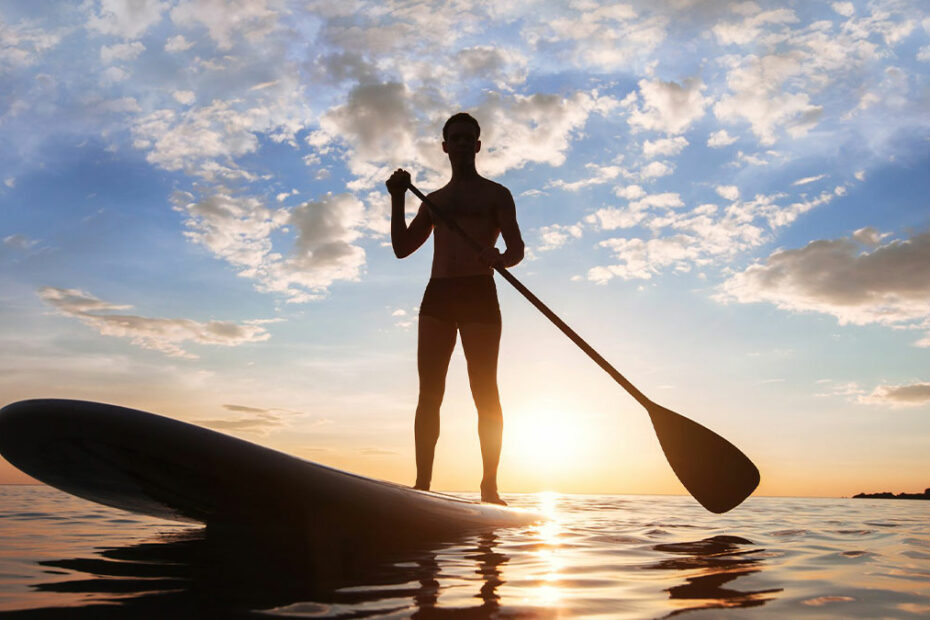Want to take your first steps (or first paddles) into the world of paddleboarding? You’ll need a guide then!
If you’ve decided to spend your holidays practicing a new sport, you’ve come to the right place; ProduceBlog’s guide explains how to paddle your SUP the right way.
There are so many sports that allow you to be in contact with nature, especially in summer when you can’t miss a chance to get outdoors. If we then extend our field of action to the sea and lake, there are no limits: you have to move. This is why paddling with a SUP (Stand Up Paddle) has become one of the most fashionable activities today; the thrill of surfing, the calm of a kayak, the convenience of being able to carry a backpack for a snack.
However, there is one problem that many people have raised with us: “I don’t know how to ride a SUP (pronounced SAP, by the way)”.
But there’s no problem!
ProduceShop is not just a trusted retailer: it is the perfect guide that has done its utmost to explain to you in a few lines how to get started in the world of Stand Up Paddle. So have a read with us, choose the board you feel most comfortable with and start paddling your way to an aperitivo on the beach (so don’t get too tired)!
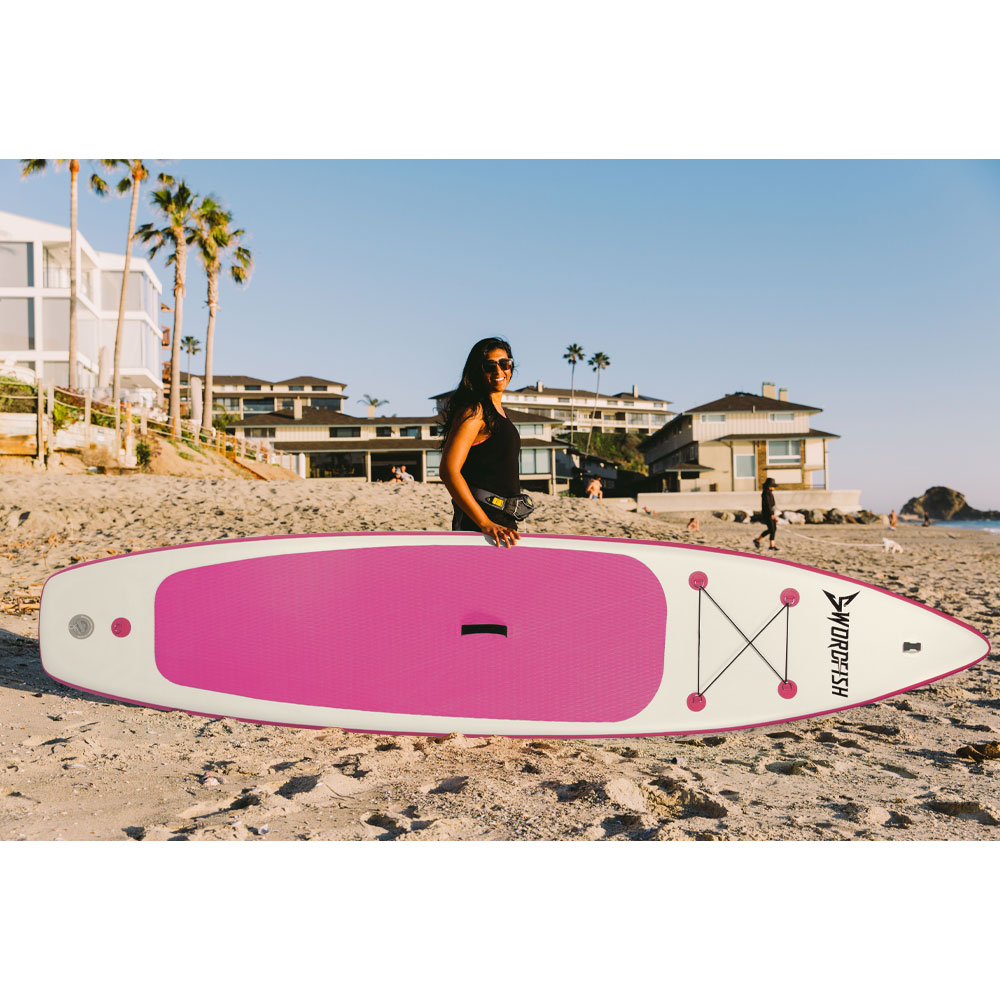
Step Zero: Choosing a SUP
Before you can become an experienced supper (i.e. SUP wearer), you must first choose the right board. The complete set consists of the board, a paddle and a leash (an elastic cord to stay connected to the board in case you fall into the water).
The first question to ask is whether to choose a rigid or an inflatable board. If a hardboard is more suitable for a certain type of activity and for more experienced surfers, an inflatable board is recommended not only for starters, but for different qualities; besides being lighter, it can easily be deflated and carried in a handy bag (included). You can therefore travel by car, motorbike, bike or even scooter with your board on your shoulder. The price, which is a not insignificant factor, is much cheaper.
The paddle, which is normally adjustable, is often provided with the SUP; to choose the right height, grab the lever or knob at the end and stretch your arm by lifting it vertically: you’ll have your suitable size. The leash should be about 30 or 40 cm longer than the board, and always tied at the ankle.
Ideal board characteristics
Once the board is properly inflated (we recommend 12 – 15 PSI), take measurements to see if it’s right for you; remember that it’s better to have a bigger board at the very beginning, as it will ensure more stability during use. An ideal size would be 366x82x15 cm (or, as it should be stated, 12’x32″x6″; yes, SUPs are measured in inches and feet). Also calculate the volume of the board, in litres, which will determine the maximum weight capacity; this is all in relation to your height and weight.
Make sure it is quick and easy to inflate and deflate. Another detail is the fins: usually removable, they can have one main fin and another optional pair; they are used to make paddling easier and help handling the board. There are also other optional extras such as nets for pouches, carrying handles or action camera supports.
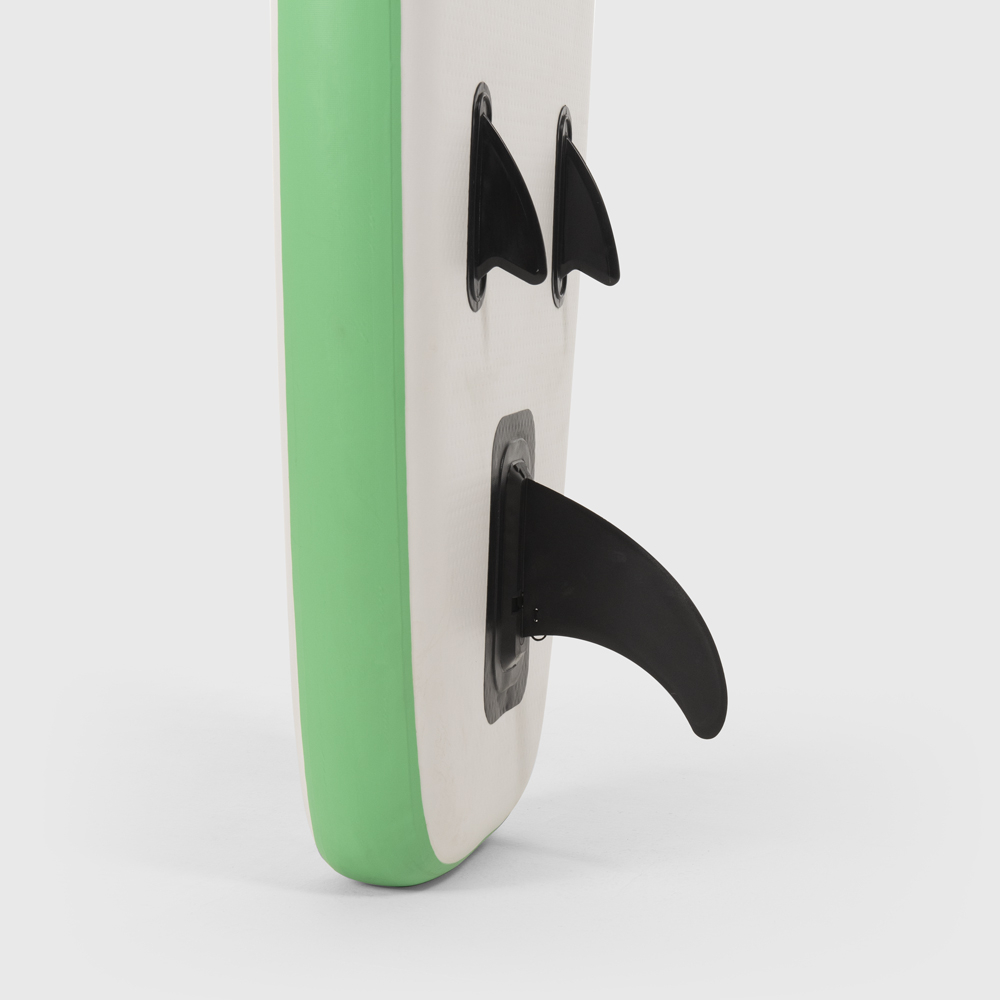
How to learn?
The best school is undoubtedly practice.
Luckily learning to use a Stand Up Paddle is not one of the most difficult activities; normally one day is enough to understand how to start to get on and keep your balance, hold and use the paddle; another day to refine your technique and understand some tricks, and that’s it!
Of course, relying on a teacher, especially if you have never surfed or are not so familiar with water, can be a good choice; not everyone has the same relationship with water and aquatic activities.
Get a waterproof pouch or a waterproof bag: sun cream, water to hydrate and a phone for any emergency are never unnecessary gadgets.
Finally, to start practising, choose a day with no waves or wind; we are talking about a physical activity in the water, which is why safety must come first. The risk of wandering off, getting lost or incurring minor accidents should not even remotely affect our SUP-afternoon, but it’s better not to go looking for problems we don’t have.

How to learn to ride a SUP: 9 basic steps.
Here’s our definitive and complete guide; you can learn in half a day the basics of stand-up paddling, and start taking your first trial runs on the beach right away. Trust ProduceBlog: we were the first to test ourselves with the instruction (we’re all safe and sound).
-
Start on your knees; starting from this position it will be much easier to become familiar with the board and to test your weight, balance and contact with the water.
-
Stand up con slowly but firmly. Avoid hesitation, as you are more likely to fall. Stand up one foot at a time, using your hands as well.
-
Remember thatbalance is better when the board is moving; so try to stand up after giving the SUP an initial push, without stopping. The movement will be much easier and more natural.

Remember to fasten the leash to the board and tie it to your ankle! -
The position is essential: feet should be on the centre of gravity of the board (roughly where the handle is), in parallel, at the same width as your pelvis. To increase stability keep your knees bent; do not squat, but be fluid, follow the rhythm of the water. Your back must be absolutely straight and, above all, always look ahead; the mountain rule of “don’t look down” also applies here!
-
Hold the paddle by placing one hand on the knob and the other, not too close, on the handle; remember that the side with the knob is the opposite of the paddling side. If you are familiar with basic sailing rules, remember that if you paddle to the right (starboard or forward) you will be going to the left (port), if you are looking forward (bow), and vice versa.
-
Keep the paddle close to the board, and make sure you hold it in the right direction (it sounds obvious, but we assure you it’s not at all).
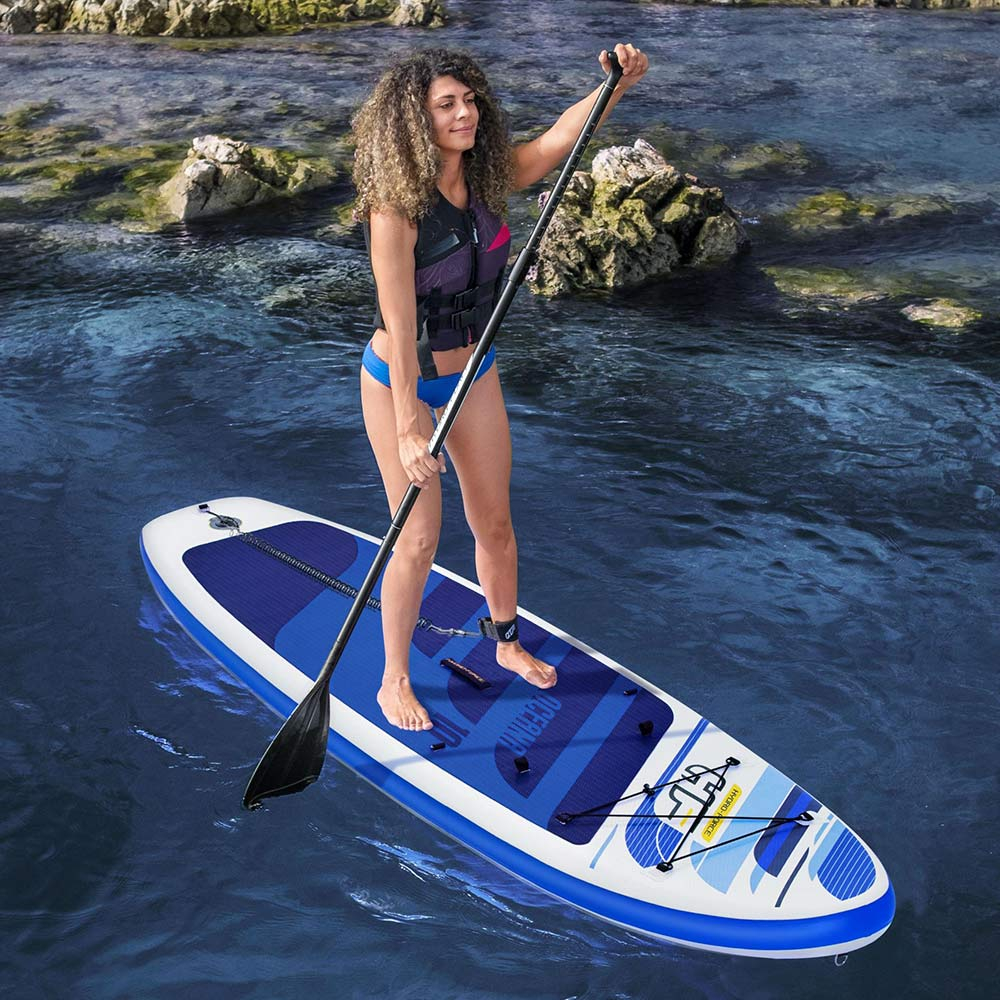
Correct posture and effective paddling on the SUP -
Alternate between one paddle on each side to go straight, and several on the same side to tack (i.e. turn, AAARGH). If you are launched, with caution and practice, you can use the paddle as a small rudder to correct your course. To slow down, move slightly towards the stern (back) of the board.
-
If you lose your balance don’t try to grab onto the board, you could hurt yourself. A dip the water and off you go.
-
Don’t stray too far from the coast, especially for your first few attempts; the risk of ending up offshore, getting lost or ruining your board (watch out for rocks and stones, by the way) are all experiences to be avoided.
You can see from these few rules that getting started on a SUP is no huge effort; lots of practice, lots of fun.
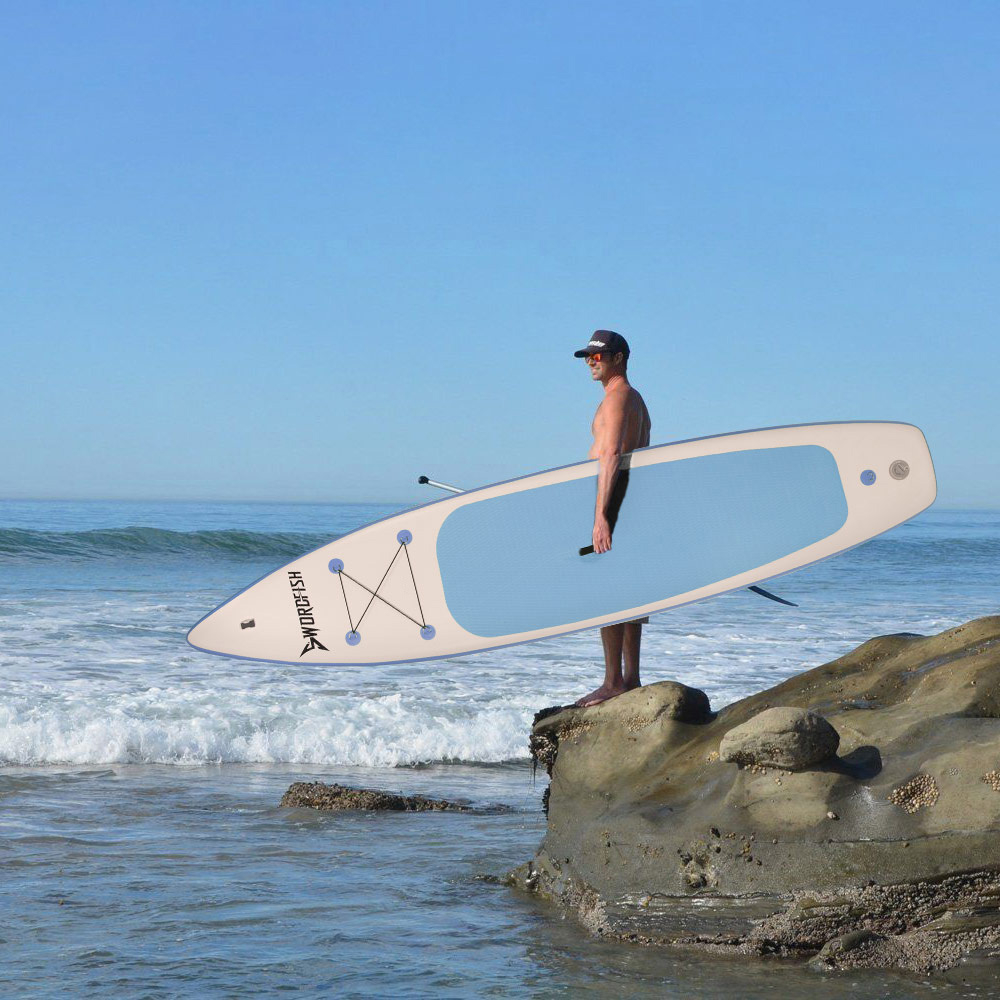
Bonus SUP!
A little tip: are there different disciplines and ways of riding a paddleboard?
But of course!
To tell us about it, we asked Yassin E., from a professional SUP team in Bristol, to explain the different types of activities possible:
“The most common practice, and the one that pushes more people to approach Stand Up Paddle, is cruising: long and slow paddles to explore coast and interesting places; more relaxing way, for which wide and comfortable SUPs are recommended. Then there is SUP-surfing, a hybrid of pure surfing and SUP, where the paddle is used to surf over the waves; unlike classic surfing, when you stand up you are already standing on the board. In this case, we recommend a small, lightweight board, such as the Swordfish Bolina, and remember to keep one foot further back. Also popular is yoga on a paddleboard: it’s just what it sounds like, i.e. water, board, early morning and yoga with company or by yourself. Finally, my speciality, SUP-Race, real speed races. Practice and training are key here, especially as far as endurance and balance are concerned.”
